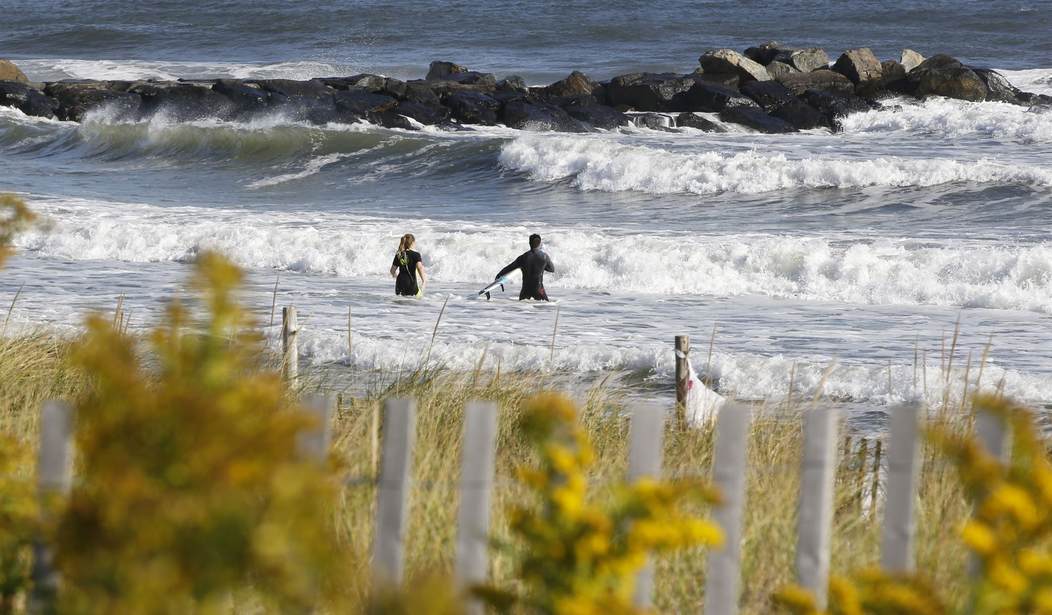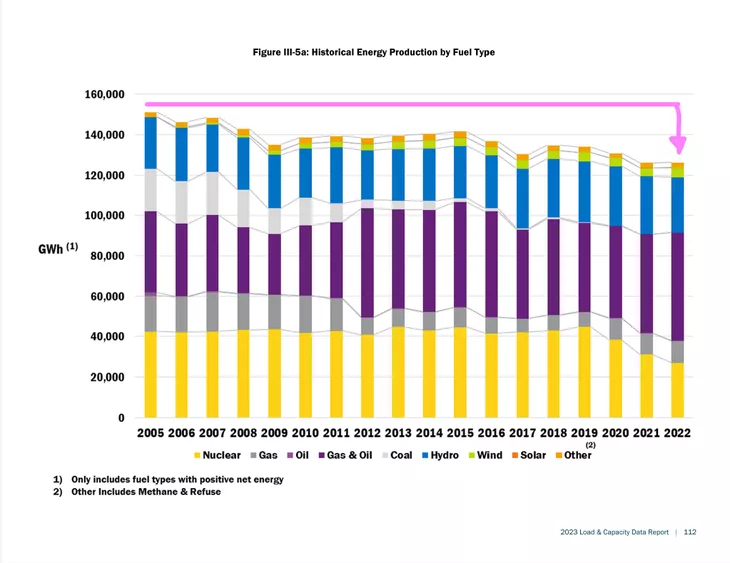Top News
New York State still on power trip to nowhere near enough power

Just a couple months ago, I wrote a post about New York State’s collision course with dark and cold. The fact that their powers-that-be were busy mandating all sorts of Draconian new regulations, mandates, and shutdowns, all in the name of saving the planet from the miserable cretins who inhabit and despoil it – which would be us.
The problem with the “dirty plant” shutdowns and switched off nuclear reactors is the simple fact that the state had yet to replace any of that lost generation capacity, God forbid increase it. Climate cultists in the legislature and their toadies feverishly wrote more and more laws/regulations requiring unfortunate citizens to switch their lives over to electricity heavy devices, like EVs and heat pumps. The state is going so far in their plans as to literally pull the gas lines out of one’s community, so you couldn’t hang onto your uber efficient (and WARM) gas stove, water heater or furnace until it croaked even if you wanted to.
“BUT WE’RE ON THE EDGE and we’ll work that sh*t out later” seemed to be The Experts™ plan.
On Friday, the New York Independent System Operator (NYISO – the non-profit that manages the state grid) – which rained on Gov Kathy Hochul’s parade as she and her group were finalizing their insane renewables package for the state – released their 2023 Load and Capacity Data Report (Gold Book). If last year’s report was a cold shower, this year’s bad news is a frog-choker for Green energy in the state and particularly New York City.
There’s a reason decarbonization advocates talk so much about power lines. Without them, the fruits of non-carbon-emitting forms of electricity generation, which are often located far away from population centers or are only available when it’s sunny and windy, can’t be fully harvested in the form of electrons flowing to customers when they need them.
The New York state electricity system operator said in a report released Friday that New York City specifically is at risk of a shortfall of 446 megawatts — about enough to power over 350,000 homes — of transmission for nine hours on an especially hot summer day in 2025 when demand for electricity is at its peak.
To those that follow New York state energy planning specifically or, like me, have the sickness that is reading reports from grid operators across the country all the time, the result was not surprising.
Quick refresher: The plants that keep the lights and air-conditioning on in a NY summer are called “peaker plants.” They kick into gear at “peak” times of heavy demand or when the solar and/or wind drop offline, providing that excess capacity to keep the system supplied with power. The idea is to provide both reliable back-up for unreliable renewables as well as provide additional power when the regular grid can’t generate enough to handle load demands.
In their infinite Green wisdom, NY has been closing peaker plants down without replacing them. They’re “dirty” doncha know.
More peaker plants will be forced to shutdown in NYISO, so that NYC will face power shortages by 2025
Imagine paying taxes to live in rolling brownoutshttps://t.co/BnatBW6u4k
— Special Situations 🌐 Research Newsletter (Jay) (@SpecialSitsNews) July 16, 2023
As you can tell from this 2023 NYISO Gold Book energy production chart, the shares of nuclear (shuttering) and natgas have shrunk significantly, but more worrying, total energy production has taken a dive as well. That’s not the direction to be heading if everyone MUST HAVE a little green machine plugged into a socket in the garage in just a few years.

There’s been a flurry of activity as far as renewable projects being contracted for by the state now, but there’s absolutely no excuse for being so far behind the literal power curve. Lollygagging and big talk without any of the dirty work that figuring out infrastructure requirements – and the cost of them – take. Figuring and #mathz is so not sexy – especially when constituents tend to choke with rage when they find out the REAL costs.
LAST YEAR, TEXAS BUILT dozens of wind and solar farms — enough to power the states of Delaware and Hawaiʻi combined. California built enough to power every home in San Francisco, twice over. Oklahoma, New Mexico, and Kansas each built enough to power hundreds of thousands of homes.
New York built three wind and solar farms, about enough to power one small city. In 2019 and 2020, it built none.
Yet it has committed to a faster green transition than almost any other state, pledging to get 70 percent of its electricity from renewables by 2030, more than double their current share. To meet that mandate, New York needs to build 100 times as much large-scale solar in the next five years as it did in the last 10. It needs to kickstart battery storage, multiplying capacity more than fiftyfold. It needs to build a brand new offshore wind industry, turning plans on paper into one of the state’s largest sources of energy.
Altogether, New York will need to build wind, solar, and energy storage 10 times faster for the rest of this decade than it did in the last.
While they’re mandating heat pumps for frigid upstate and EVs for everyone, they’re just getting around to some paperwork on projects in the planning stages. So there’re still lawsuits, environmental studies, community pushback – years of delays before anything happens, to include cost of materials potentially skyrocketing and torpedoing a project. It’s happening bigly in wind farm development already.
Not to mention that the schweet, schweet clarion call to save the planet may well now be falling on deaf public ears, God willing. There are less people falling for the green banana in the tailpipe every damn day.
The reality check that is the Gold Book points out that (Pg. 77), in only a year’s time, NY state has dropped more power than they can afford to lose right now…
…This section provides an overview of significant changes in generating facilities since the 2022 Gold Book was issued, together with a summary of changes in energy generation in the past year. This information is presented in two steps. Reported first is the net change in existing generation from the 2022 Gold Book through March 15, 2022, which is a decrease of 342.4 MW9 for the summer. Second, any additional generation changes from March 15, 2023 until the summer of 2023 are reported, which is a decrease of 283.9 MW, excluding changes in Special Case Resources and Net Purchases. This results in a total capacity decrease of 626.3 MW from the summer of 2022 to the summer of 2023. All generator capacity values listed in this section are DMNC.
Those are the summer power generation figures – the winter figures are all decreases as well.
So NY is facing a deficit in generation at this very moment, while staring down projected growth in demand. The year-to-year numbers in the NYISO growth chart forecast a huge jump in predicted power requirements over the course of the next decades, thanks entirely to the mandated electrification of the state, and that is with accounting for the effects of energy efficiency initiatives, insulation, etc..
…Over a 30-year horizon, the NYCA baseline energy and summer and winter peak demand forecast growth rates have increased compared to last year, as exhibited in the following table:

Baseline energy and coincident peak demand increases significantly throughout the forecast period, driven largely by large load project growth in the early forecast years, and electrification of space heating, non-weather sensitive appliances, and electric vehicle charging in the outer forecast years. Increases in growth rates relative to the 2022 Gold Book are primarily attributed to increased large load projects and EV charging impacts, including greater coincidence with periods of peak electric demand.
For all the squawking about carbon emissions from peaker plants – and there is plenty – there is still no reliable answer to their demise…
One of the challenges with solar is that its electricity production falls off a cliff at the end of the day.
This can cause electricity prices to spike when natural gas peaker plants can’t turn on quickly enough to offset falling solar.
ERCOT had to create a new Ancillary… pic.twitter.com/p48ym9hzCd
— Pierre Rochard (@BitcoinPierre) July 9, 2023
.
…even as the renewables crowd pushes battery storage as a “Green” substitute.
Yeah. Huge banks of mega batteries – ANY battery – are so “green.”
Holy smokes – do they EVER even listen to themselve…
Never mind.
Read the full article here


















